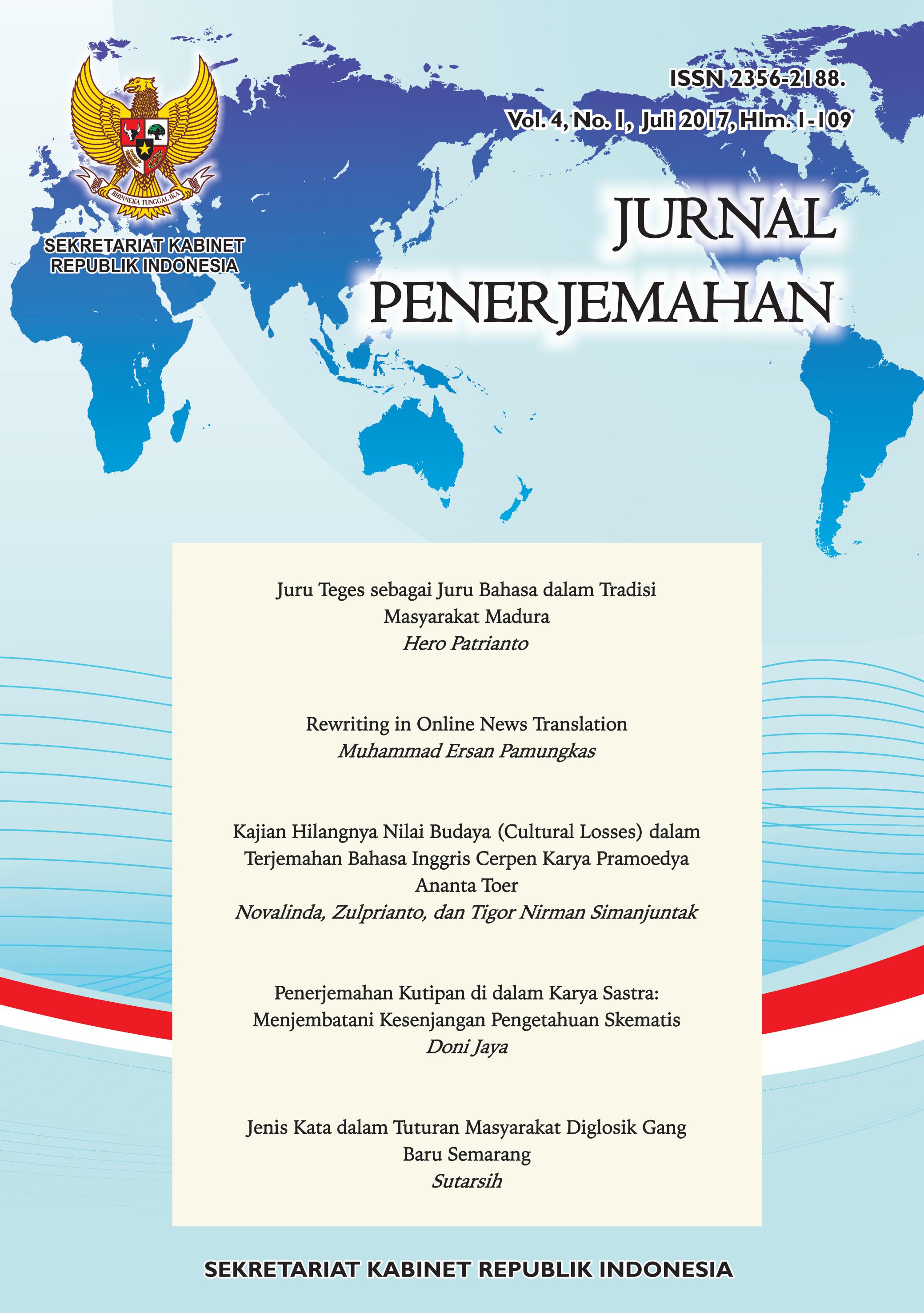Abstract
This preliminary study aims to gain evidence of literary interpreting through describing the work procedure of juru teges, a traditional profession in mamaca, an oral tradition of Madurese. The study focused on two themes: product and performance, and practice and profession. The performances of three mamaca groups in Sumenep were audio-visually recorded. The data were transcriptions of source and target texts. The source text was both in written and oral form: the written form was a text called Nurbuwat written in Old Javanese language using a modified Arabic writing system; the oral ones were the performances of the reading performers. The target texts were the performances of juru teges in Madurese language. Interviews were also taken to collect additional data on social factors of juru teges. The work of juru teges clearly demonstrates a transference of meaning from one language to another language. Thus, they perform a translating activity. As the work of juru teges only exists during the oral performance, their performancedemonstrates a one-time presentation, thus meets the distinguished nature of interpreting, which is ‘immediacy’ (Pöchhacker, 2001). The juru teges has never used references or read any text during their performance. They rely on their memory instead. In term of memory use suggested by Hale (2003), the work of juru teges could be categorized as an activity of the so called ‘consecutive’ interpreting, which exibits an overlap between translating and interpreting. However, to get a stronger justification, this study may need a further investigation requiring an experiment which will look at the source and target texts solely as linguistic materials.
Keywords: translation studies, oral tradition, interpreting

